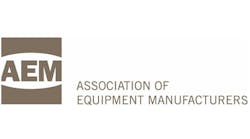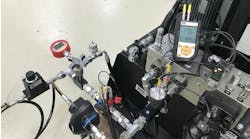The Association of Equipment Manufacturers (AEM) of Milwaukee considers changes in agricultural (ag) vehicle braking requirements for North America. Michael Pankonin, Senior Director, Technical & Safety Services at AEM, attests that braking requirements for towed and towing agricultural field equipment need to be updated to keep pace with current machine designs and practices.
A small task force of braking-system experts from North American-based equipment manufacturers along with developers and suppliers of vehicle braking systems has been comparing the current requirements in the American Society of Agricultural Engineer’s (ASAE) S365.9 standard to the demands currently faced by equipment and practices are placing on braking systems as well as requirements from other regions of the world.
The review of the dated North American braking standard will take the next step towards a thorough revision when manufacturers meet in mid-June. The industry-driven review has progressed to a point where a broader coalition, including manufacturers of brake components, self-propelled, towed and towing equipment, will meet to review ASAE S365.9 as it applies to agricultural equipment currently being marketed.
The group recognizes that increases in equipment speed, weight and size along with greater congestion of U.S. roadways are placing more demands on the performance and design of agricultural equipment braking systems.
Although much work has already been completed, Pankonin says there is still a long way to go, and many more voices are needed to take into consideration. Invitations have been extended to a broad base of interested parties in both the U.S. and Canada.
The upcoming meeting will bring new attendees up-to-date on the current status, needs and timelines to enhance existing standards and, where possible, establish consistency with other regional standards and regulations, thereby improving manufacturing efficiencies.
Topics to be discussed include means to resolve the concerns over the current ASAE S365.9 standard which:
• has no provision to allow towing a lightweight ag vehicle without brakes at speeds exceeding 32kph (20 mph).
• makes no distinction between commodity trailers with variable transport loads and implements with fixed transport loads.
• does not address how the brake system interfaces between towing vehicle and the towed vehicle.
• makes no provisions to warn an operator that the brake system has failed.
• does not clearly address requirements for combination braking systems (hydrostatic and friction brakes).
• increases complexity for manufacturers and users due to the misalignment with other standards around the world.
Once agreement has been achieved, the discussions will move to the formal ASABE standardization process. For more information, contact Michael Pankonin at [email protected]
For more information, contact Michael Pankonin, AEM senior director, technical and safety services, at [email protected], or call (414) 298-4128.


